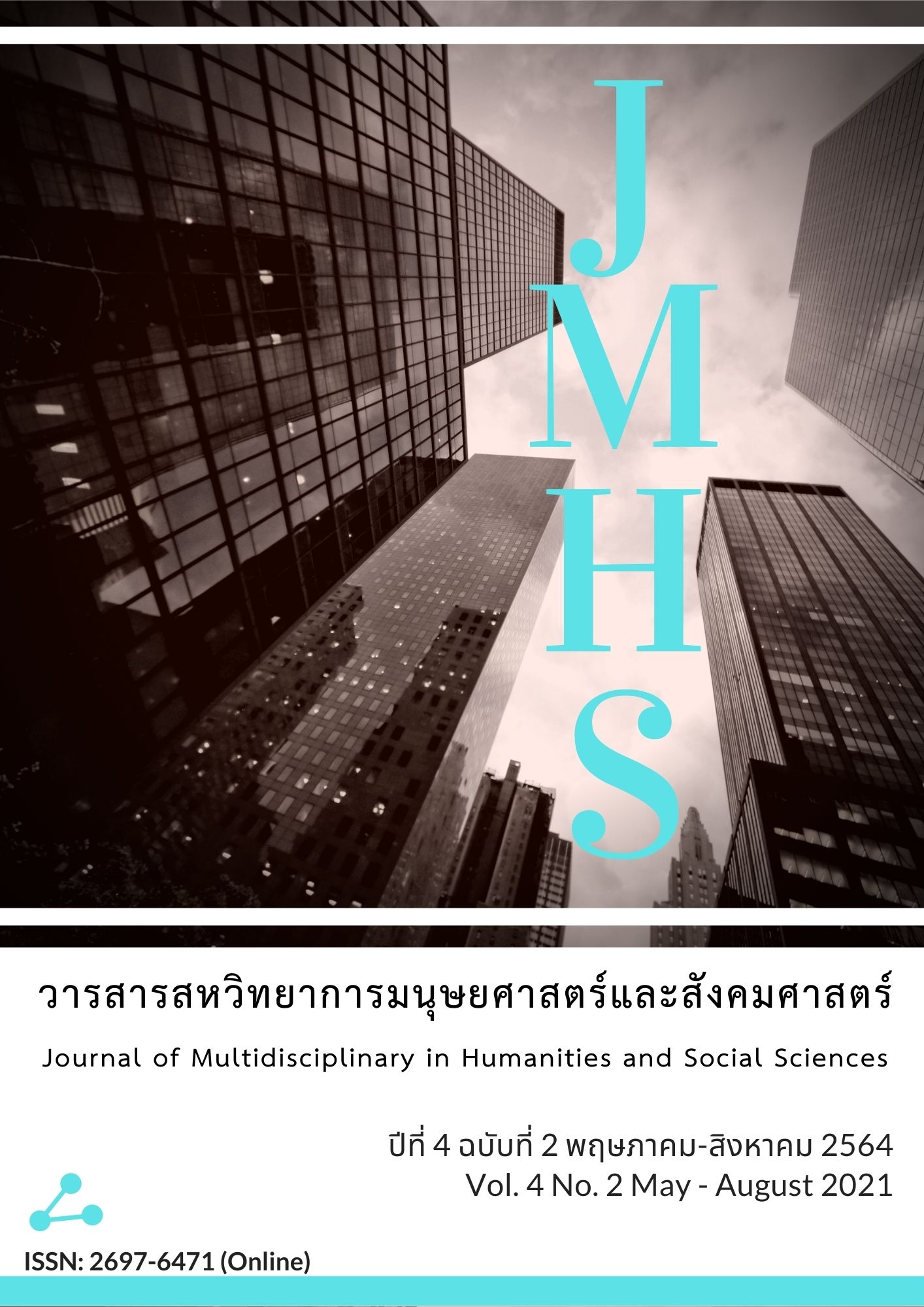The Leader’s Path According to The Great Determination of Mahayana Buddhism
Main Article Content
Abstract
The leader path of Mahayana Buddhism is told as the way of acceptance leaders with intelligence as well as donation. These behaviors are to take people to the right destination and to change the society better because leaders can choose the appropriate solution for chaotic society. This was to present these aspects 1) Meaning and importance of leadership, 2) The Good character of leadership, 3) The leaders Idealism along Mahayana Buddhism, and 4) Paths of leaders along the great aspiration. Data were collected via the Theravada Buddhism and the Mahayana Buddhism texts, and to guide the study for those interested in further.
Article Details
Views and opinions appearing in the Journal it is the responsibility of the author of the article, and does not constitute the view and responsibility of the editorial team.
References
ณรงค์ เส็งประชา. (2538). มนุษย์กับสังคม. (พิมพ์ครั้งที่ 3). กรุงเทพฯ: โอ.เอส.พริ้นติ้งเฮ้าส์.
ทวีวัฒน์ ปุณฑริกวิวัฒน์. (2545) ศาสนาและปรัชญาในจีน ทิเบตและญี่ปุ่น. กรุงเทพฯ: สุขภาพใจ.
ธานี สุวรรณประทีป, ชัยชาญ ศรีหานู, พระปลัดประพจน์ สุปภาโต และ พระมหาสมศักดิ์ ญาณโพโธ. (2563). มิติของการตีความคำสอนของศาสนาส่งผลต่อจุดยืนและวิธีการเข้าถึงความจริงสูงสุด. วารสารพุทธมัคค์, 5(2), 88-97.
นพดล เจริญทรัพยานันต์. (2562). ลักษณะของผู้นำที่ดี 14 ประการ. สืบค้นเมื่อ 13 มกราคม 2564, จาก https://www.toward-goal.com/contents/
พระพรหมคุณาภรณ์ (ป.อ.ปยุตฺโต). (2550). ภาวะผู้นำ. (พิมพ์ครั้งที่ 9). กรุงเทพฯ: สุขภาพใจ.
พระยาอนุมานราชธน. (2532). ศาสนาเปรียบเทียบ. กรุงเทพฯ: คุรุสภา.
เพ็ญรุ่งจรัส ตฤณชาติวณิชย์, พระปลัดสมชาย ปโยโค และ พระถนัด วฑฺฒโน. (2563). ความเชื่อในการสร้างพระพุทธปุษยคีรีศรีสุวรรณภูมิ อำเภออู่ทอง จังหวัดสุพรรณบุรี. Journal of Roi Kaensarn Academi, 5(2), 85-96.
รัตติกรณ์ จงวิศาล. (2551). มนุษยสัมพันธ์ : พฤติกรรมมนุษย์ในองค์กร. (พิมพ์ครั้งที่ 2). กรุงเทพฯ: มหาวิทยาลัยเกษตรศาสตร์.
วิศวภัทร มณีปัทมเกตุ. (2544). พระไภษัชยคุรุไวฑูรยประภาสัปตพุทธปูรวปณิธานวิเศษสูตร. กรุงเทพฯ: เคล็ดไทย.
สมพร สุทัศนีย์. (2542). มนุษยสัมพันธ์. (พิมพ์ครั้งที่ 5). กรุงเทพฯ: จุฬาลงกรณ์มหาวิทยาลัย.
สุมาลี มหณรงค์ชัย. (2546). พุทธศาสนามหายาน. กรุงเทพฯ: ศยาม.
สุวิญ รักสัตย์. (2555). พระพุทธศาสนามหายาน. (พิมพ์ครั้งที่ 2). กรุงเทพฯ: บางกอกบล๊อก.
เสฐียร พันธรังษี. (2542). พุทธประวัติมหายาน. (พิมพ์ครั้งที่ 5). กรุงเทพฯ: ศยาม.
เสฐียร พันธรังษี. (2549). ศาสนาเปรียบเทียบ. (พิมพ์ครั้งที่ 10). กรุงเทพฯ: สุขภาพใจ.
เสถียร โพธินันทะ. (2506). วิมลเกียรตินิทเทสสูตร. กรุงเทพฯ: โรงพิมพ์มหามกุฏราชวิทยาลัย.
เสถียร โพธินันทะ. (2555). ปรัชญามหายาน. (พิมพ์ครั้งที่ 6). กรุงเทพฯ: โรงพิมพ์มหามกุฏราชวิทยาลัย.
Christopher, S. Q. (2000). Engaged Buddhism in the West. Boston: Wisdom Publications.
Errickere, C. (1995). Buddhism. USA: NTC Publishing Group.
Morphet, E. L. et al. (1982). Educational Organization and Administration. (4th ed.). London: Prentice Hill.
Punwasuponchat, N. et al. (2021). A Study of Forest Dwelling and Meditation Practice. Psychology and Education, 58(2), 10567-10571.
Snongtaweeporn, T., Siribensanont, C., Kongsong, W., & Channuwong, S. (2020). Total Quality Management in Modern Organizations by Using Participation and Teamwork. Journal of Arts Management, 4(3), 818-829.
Suwanpratheep, T., Koomkrong, V., Kamalo, P.K., Phra Rajratanamuni, & Srihanu, C. (2020). The Leadership in Sangha Governance in ASEAN Community. Solid State Technology, 63(4), 2576 – 2584.
Tannenbaum, I. R. (1961). Leadership and Organization: A Behavioral Science Approach. New York: McGraw-Hill.


